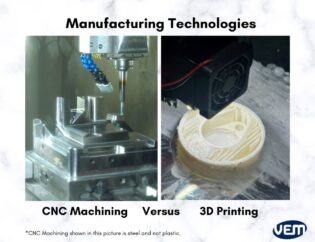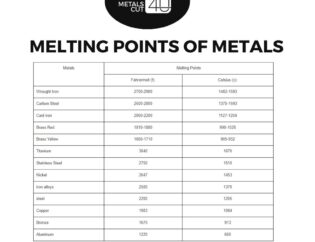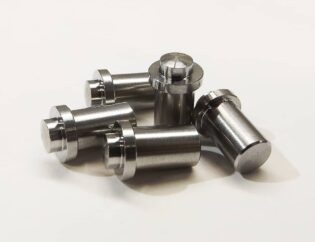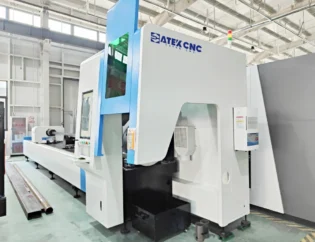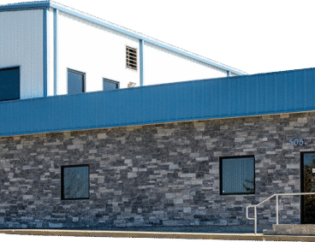Injection molded plastic parts play a crucial role in modern manufacturing, serving a wide array of industries from automotive to consumer goods. This guide delves into the intricacies of the injection molding process, emphasizing its efficiency, versatility, and cost-effectiveness. Understanding these components is essential for engineers, designers, and manufacturers aiming to optimize production and enhance product quality.
Readers can expect to learn about the fundamental principles of injection molding, including material selection, design considerations, and the various stages of the molding process. We will explore the advantages and limitations of injection molded parts, providing insights into best practices for achieving optimal results. Additionally, the guide will cover advancements in technology that are shaping the future of injection molding.
By the end of this guide, readers will have a comprehensive understanding of injection molded plastic parts, equipping them with the knowledge to make informed decisions in their projects. Whether you are a seasoned professional or new to the field, this resource will enhance your expertise and inspire innovative approaches to product development.
A Comprehensive Guide to Plastic Injection Molding
Plastic components are used in many industries. From automotive to home appliances and medical devices, components in a variety of plastics are used to protect, enhance, and build a huge range of products. With its reliable, high-quality performance, injection molding is one of the most common processes used to produce plastic components. Indeed, the compound annual growth rate (CAGR) of the injection molded plastics market is expected to increase significantly in the coming years.
Understanding Plastic Injection Molding
Plastic injection molding is a manufacturing process that involves injecting molten plastic into a mold to create a specific shape. This method is favored for its efficiency and ability to produce high volumes of parts with consistent quality. Companies like Protolabs, Rex Plastics, Xometry, and Essentra Components utilize this technology to meet diverse manufacturing needs.
Technical Features of Injection Molding
The injection molding process is characterized by several technical features that enhance its efficiency and output quality. Below is a comparison table highlighting these features:
| Feature | Description |
|---|---|
| Material Types | Thermoplastics and thermosets are commonly used, each with unique properties. |
| Cycle Time | Typically ranges from a few seconds to several minutes, depending on part size. |
| Mold Design | Molds can be single or multi-cavity, affecting production efficiency. |
| Tolerances | Can maintain tolerances of +/- 0.003 in. (0.08 mm) for precision parts. |
| Production Volume | Suitable for low to high-volume production, making it versatile for various needs. |
| Cost Efficiency | Lower cost per part at higher volumes due to reduced waste and efficient processes. |
Types of Injection Molding
There are various types of injection molding processes, each suited for different applications. The following table outlines the main types:
| Type | Description |
|---|---|
| Standard Injection Molding | The most common type, used for a wide range of plastic parts. |
| Overmolding | Involves molding one material over another to create a single component. |
| Insert Molding | Inserts are placed into the mold before the plastic is injected, enhancing strength. |
| Micro Molding | Used for producing very small parts with high precision. |
| Liquid Silicone Rubber (LSR) Molding | Utilizes silicone materials for flexible parts, ideal for medical applications. |
The Injection Molding Process
The injection molding process consists of several key steps:
- Material Preparation: Plastic pellets are fed into a hopper and heated until they melt.
- Injection: The molten plastic is injected into a mold under high pressure.
- Cooling: The plastic cools and solidifies in the mold, taking its shape.
- Ejection: Once cooled, the part is ejected from the mold.
- Finishing: Additional processes like trimming or polishing may be applied.
Advantages of Injection Molding
Injection molding offers numerous advantages, making it a preferred choice for manufacturers:
– High Efficiency: Capable of producing thousands of parts quickly.
– Low Waste: Minimal material waste compared to other manufacturing methods.
– Complex Shapes: Ability to create intricate designs and features.
– Consistent Quality: High repeatability ensures uniformity across production runs.
Applications of Injection Molding
Injection molding is widely used across various industries, including:
– Automotive: For producing components like dashboards and bumpers.
– Medical Devices: Creating precise parts for syringes and surgical instruments.
– Consumer Products: Manufacturing items such as containers and toys.
Conclusion
Plastic injection molding is a vital manufacturing process that combines efficiency, versatility, and precision. Companies like Protolabs, Rex Plastics, Xometry, and Essentra Components leverage this technology to meet the diverse needs of their clients. Understanding the technical features and types of injection molding can help businesses make informed decisions about their manufacturing processes.
FAQs
1. What materials are used in injection molding?
Injection molding primarily uses thermoplastics and thermosets, each offering unique properties suitable for different applications.
2. How long does the injection molding process take?
The cycle time for injection molding can range from a few seconds to several minutes, depending on the size and complexity of the part.
3. What are the advantages of injection molding?
Advantages include high efficiency, low waste, the ability to create complex shapes, and consistent quality across production runs.
4. Can injection molding be used for small parts?
Yes, micro molding is specifically designed for producing very small parts with high precision.
5. What industries benefit from injection molding?
Injection molding is widely used in automotive, medical, consumer products, and many other industries requiring high-quality plastic components.

